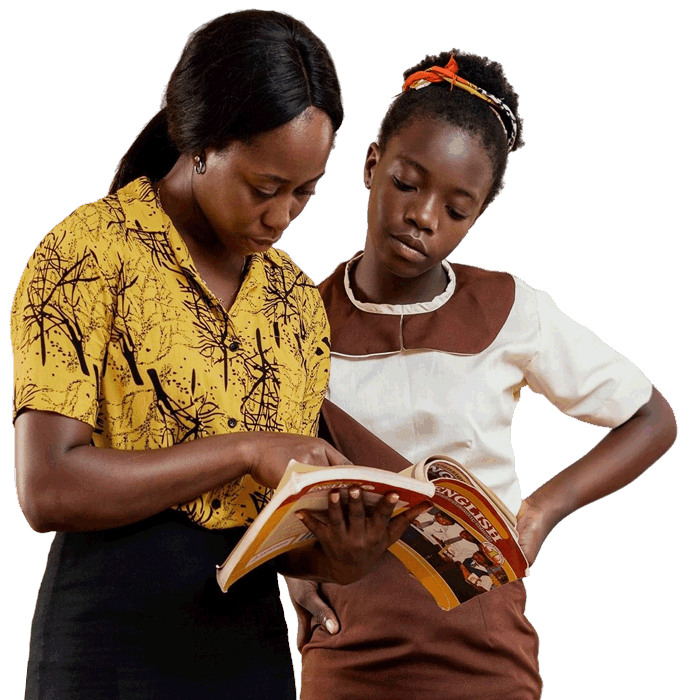Gender-Responsive Pedagogy for Basic Education Teachers
Creating Classrooms Where All Learners Thrive
What Is Gender-Responsive Pedagogy (GRP)?
Gender-Responsive Pedagogy is a teaching approach that recognizes how gender influences learning experiences. It equips teachers to create inclusive, equitable, and empowering classroom environments where both girls and boys can fully participate, express themselves, and succeed, especially in subjects like science, math, ICT, and other traditionally gender-biased areas.
What Is Gender-Responsive Pedagogy (GRP)?
Gender-Responsive Pedagogy is a teaching approach that recognizes how gender influences learning experiences. It equips teachers to create inclusive, equitable, and empowering classroom environments where both girls and boys can fully participate, express themselves, and succeed, especially in subjects like science, math, ICT, and other traditionally gender-biased areas.

Why GRP Matters in Basic Education
- Early bias = long-term impact: Students form ideas about what subjects are “for girls” or “for boys” as early as upper primary.
- STEM pipeline: Without gender-sensitive teaching, girls may lose interest in math, science, and technology, reducing their chances of joining technical career pathways later.
- Disparities begin early: Boys may dominate class participation, while girls may be discouraged from speaking up or taking leadership roles.
Key Strategies for Teachers
1. Use Gender-Inclusive Language
o Avoid stereotypes like “boys are naturally better at math.”
o Use examples that reflect both genders in diverse roles (e.g., female engineers, male nurses).
2. Encourage Equal Participation
o Ensure both girls and boys raise hands, lead groups, and access learning materials
equally.
o Be mindful not to unintentionally praise one gender more than the other.
o Avoid stereotypes like “boys are naturally better at math.”
o Use examples that reflect both genders in diverse roles (e.g., female engineers, male nurses).
2. Encourage Equal Participation
o Ensure both girls and boys raise hands, lead groups, and access learning materials
equally.
o Be mindful not to unintentionally praise one gender more than the other.
3. Tackle Stereotypes Head-On
o Facilitate open discussions about gender roles and career choices.
o Use real-world examples of successful women in STEM and leadership.
4. Provide Safe and Supportive Learning Spaces
o Create an environment where girls and boys feel respected and free from bullying or gender-based teasing.
o Establish clear class rules against gender-based harassment or exclusion.
o Facilitate open discussions about gender roles and career choices.
o Use real-world examples of successful women in STEM and leadership.
4. Provide Safe and Supportive Learning Spaces
o Create an environment where girls and boys feel respected and free from bullying or gender-based teasing.
o Establish clear class rules against gender-based harassment or exclusion.
5. Use Gender-Balanced Teaching Materials
o Choose textbooks, posters, and stories that feature both genders in diverse roles.
o Revise materials that depict outdated gender norms.
6. Role Modeling and Mentorship
o Invite local women professionals to speak to girls about STEM and leadership.
o Support girl-led school clubs and academic competitions.
o Choose textbooks, posters, and stories that feature both genders in diverse roles.
o Revise materials that depict outdated gender norms.
6. Role Modeling and Mentorship
o Invite local women professionals to speak to girls about STEM and leadership.
o Support girl-led school clubs and academic competitions.
Practical Classroom Actions
| Challenge | GRP Strategy |
| Boys dominate group work | Assign rotating leadership roles |
| Girls are shy to answer questions | Use small-group discussions first |
| Only boys join the science club | Create gender-inclusive STEM activities and clubs |
| Girls drop science after Form 2 | Share success stories of women in STEM, show clear career pathways |
How InnovateHER Supports Teachers in Basic Education
InnovateHER is actively integrating GRP into the basic education space through:
• Teacher sensitization sessions
• Career awareness & STEM clubs in schools
• STEM Career Toolkit with GRP-aligned guidance
• Recognition of teacher champions who support girls in STEM subjects
• Teacher sensitization sessions
• Career awareness & STEM clubs in schools
• STEM Career Toolkit with GRP-aligned guidance
• Recognition of teacher champions who support girls in STEM subjects

Understanding Gender-Responsive Pedagogy (GRP)
- What Is Gender-Responsive Pedagogy (GRP) in TVET? Subtitle
- Why It Matters in TVET Subtitle
- Core Components of GRP for TVET Trainers Subtitle
- Training TVET Trainers in GRP: What to Include Subtitle
- Outcomes of Applying GRP in TVET Subtitle
- How InnovateHER Embeds GRP Subtitle
Gender-Responsive Pedagogy (GRP) refers to a teaching approach that recognizes and actively addresses the different learning needs, interests, and barriers that students face due to gender. In the TVET (Technical and Vocational Education and Training) context, GRP ensures that both male and female learners can thrive in skill-based, often male-dominated fields like engineering, ICT, construction, and
manufacturing.
manufacturing.
• Women remain underrepresented in STEM-TVET courses in Kenya — often due to societal biases, stereotyping, and unwelcoming training environments.
• Many TVET institutions lack the capacity to identify and challenge hidden gender biases in classroom dynamics, instructional materials, and assessment practices.
• GRP helps create an inclusive learning environment that boosts enrollment, retention, and completion for girls in STEM-related courses.
• Many TVET institutions lack the capacity to identify and challenge hidden gender biases in classroom dynamics, instructional materials, and assessment practices.
• GRP helps create an inclusive learning environment that boosts enrollment, retention, and completion for girls in STEM-related courses.
1.Inclusive Language & Communication
o Use neutral, affirming language (e.g., "technician" instead of "repairman").
o Encourage all students equally, especially in practical labs and group tasks.
2. Bias-Free Curriculum & Materials
o Review textbooks, case studies, and tools for gender bias.
o Integrate examples of women professionals in technical fields.
3. Gender-Sensitive Classroom Management
o Avoid favoring one gender in questioning or task assignments.
o Address harassment, discrimination, and stereotyping proactively.
4. Encouraging Participation
o Use participatory teaching methods that give equal space to girls and boys.
o Ensure girls are not relegated to "support roles" in practical sessions.
5. Safe and Supportive Learning Environments
o Ensure gender-friendly facilities (sanitation, changing rooms).
o Create reporting channels for gender-based violence or harassment.
6. Empowerment Through Role Models
o Invite female professionals as guest speakers or mentors.
o Highlight alumni success stories to inspire confidence.
o Use neutral, affirming language (e.g., "technician" instead of "repairman").
o Encourage all students equally, especially in practical labs and group tasks.
2. Bias-Free Curriculum & Materials
o Review textbooks, case studies, and tools for gender bias.
o Integrate examples of women professionals in technical fields.
3. Gender-Sensitive Classroom Management
o Avoid favoring one gender in questioning or task assignments.
o Address harassment, discrimination, and stereotyping proactively.
4. Encouraging Participation
o Use participatory teaching methods that give equal space to girls and boys.
o Ensure girls are not relegated to "support roles" in practical sessions.
5. Safe and Supportive Learning Environments
o Ensure gender-friendly facilities (sanitation, changing rooms).
o Create reporting channels for gender-based violence or harassment.
6. Empowerment Through Role Models
o Invite female professionals as guest speakers or mentors.
o Highlight alumni success stories to inspire confidence.
• Understanding gender and social norms
• Identifying unconscious bias
• Inclusive curriculum review
• Gender-sensitive instructional methods
• Monitoring learning outcomes by gender
• Tools for promoting equality in assessment
• Identifying unconscious bias
• Inclusive curriculum review
• Gender-sensitive instructional methods
• Monitoring learning outcomes by gender
• Tools for promoting equality in assessment
- Increased female enrollment and completion in STEM-TVET fields
- Improved classroom equity and engagement
- More girls pursuing apprenticeships and industry placements
- Creation of role model ecosystems within training centers
InnovateHER integrates gender-responsive pedagogy by:
• Facilitate capacity building for trainers as GRP Champions
• Embedding GRP in mentorship
• Facilitate capacity building for trainers as GRP Champions
• Embedding GRP in mentorship
